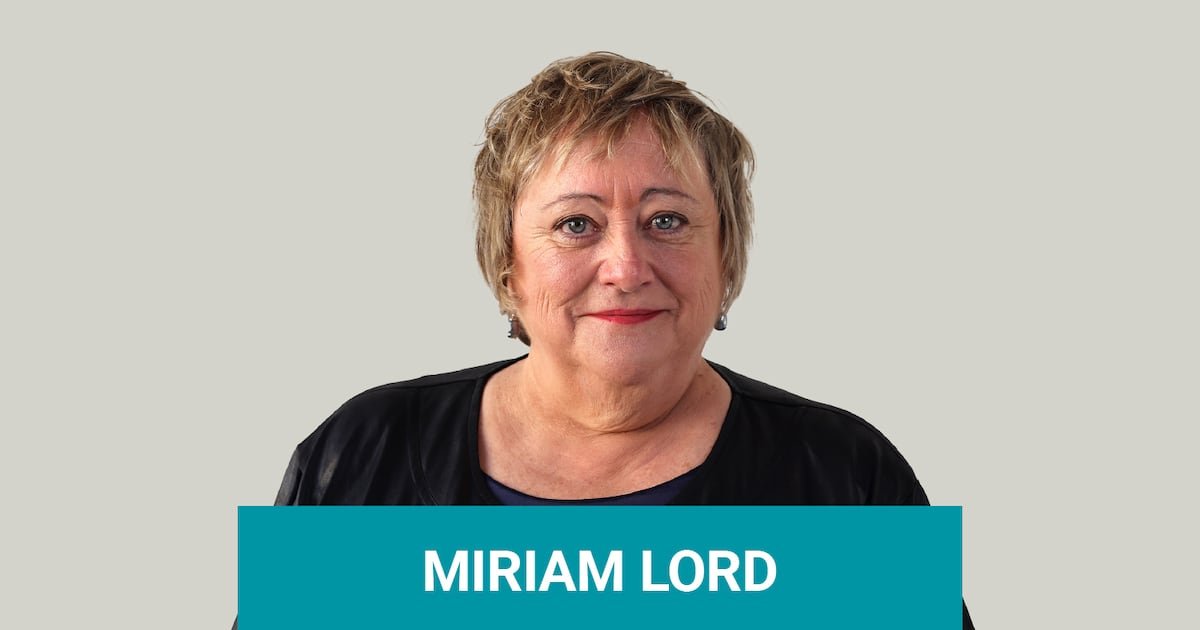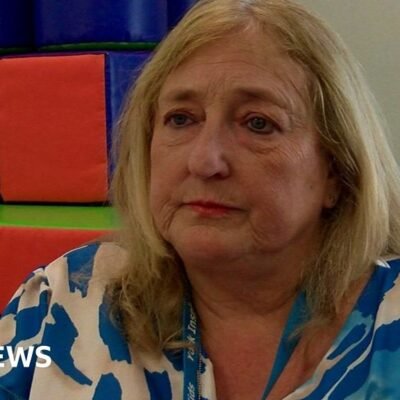“Here’s your envelope of money now for next year. That’s all you’re getting. So don’t go spending it all on the one developer!”
Picture the scene: Government Ministers lined up before the Taoiseach after a final Cabinet meeting to definitively nail down the lack-of-detail in the rebooted National Development Plan (NDP).
Micheál Martin sits at a table with Tánaiste Simon Harris beside him.
When he greets each nervous-looking Minister by name, Simon rummages through a box, finds a corresponding envelope and hands it to Micheál, who hands it on to a silent Cabinet member.
“One for you … one for you … one for you …”
Ministers back out the door, scuttle off to quiet corners and, with trembling hands, rip open their envelopes.
Anxious advisers hover nearby. Colleagues lean in, all ears.
“Two point two billun,” announces Patrick O’Donovan, the Minister for Culture, Communications and Sport. “Arragh, ‘tis all right, I suppose.”
“I got nine point two billion. Whoop! Whoop!” carols Jennifer Carroll MacNeill, the Minister for Health.
“Twenty-two point three billion. Not bad Patrick, wha? I’m off now to New York to address the UN,” chortles Darragh O’Brien, Minister for Transport.
“Well. Oh. I’ve got seven hundred and ninety-five million,” says Norma Foley, the Minister for Children, Disability and Equality, voice trailing off.
And so on. An ashen-faced James Browne, the Minister for Housing, is last one out. He carefully opens his envelope.
“They’ve given me thirty-five point nine billion. Oh God.”
It’s a lot of responsibility. For all of them. Between now and the actual budget in October, the various Ministers have been ordered by their Government masters to come up with the best and most feasible ways to spend their money.
“Each individual Minister has now received an envelope,” the Taoiseach told the Tuesday launch. “They have huge, significant envelopes.”
The next step is that they must identify priority projects, cost them and get cracking. In an ideal world, they should have no money left over at the end of the financial year and concrete results to show for their work.
No pie-in-the-sky promises to keep constituents sweet and voters in high hopes. No woolly lists of works pending and possible completions. Just real deals, shovel-ready schemes and projects in the pipeline.
This is not the same as the last plan, which was launched four years ago by then taoiseach Micheál Martin in Cork and which promised “a huge pipeline of projects”.
It was produced in the aftermath of the Covid crisis and called the “renewed NDP”. The new model is called the “revised NDP”.
The difference between them? Over €100 billion. Back then, the word being bandied about was “gigantic” when it came to describing the depth of capital investment in the plan.
“It’s on a scale the like of which we’ve never seen before,” said Michael McGrath, who was minister for public expenditure at the time and has since become Ireland’s EU Commissioner.
That’s peanuts now.
At the time, Micheál had to deny claims that the Government merely came up with a “wish list” of things to do rather than a “to-do list” of things that would most likely be done.
The 2021 version was roundly criticised for having too much detail.
The 2025 edition is being roundly criticised for having very little detail.
“It was too long. The last NDP was too big a document, to be quite frank,” shrugged Micheál at the launch of this shrinkflation declaration.
It’s a very slim volume – nearly a quarter of the size of what went before. If the last one ran to almost 200 pages, the revised NDP runs to 46 pages, 11 of which are devoted to the names of chapters. Jack Chambers of Commerce, the Minister for Public Expenditure, gets a full page for his foreword and the “three leaders” get another page for their foreword.
The “three leaders”, as they were described at the beginning of the briefing, being the Taoiseach, the Tánaiste and Seán Canney, who is a Minister of State and leader of the Coalition Supporters’ Club. The CSC is bravely battling for the right not to be known as the Lowry Independents.
The rejigged NDP “is unprecedented in scale and scope”, said the Tánaiste. “But now, our watchword must be delivery.”
“The scale and scope of this review of the National Development Plan is unprecedented,” said Seán, speaking on behalf of “the Independent Ministers who I represent on the podium here today”.
He omitted to say that their watchword is delivery too.
Indeed, it was unkindly suggested at the event in Government Buildings press centre that the main reason for such a lack of detail – apart from announcing how many billions are being lashed out on infrastructure and in what quantities and what general areas – was that the Government doesn’t want the Opposition to know how much has been allocated for the pet projects championed by members of the Coalition Supporters’ Club.
Despite repeated questioning, the three leaders were unable to give specific detail of how all this money will be spent, apart from a few “mega-projects” such as the long-awaited Dublin’s MetroLink, which is now on a par with draining the Shannon.
[ Ireland’s latest investment plan: A sceptic’s guideOpens in new window ]
It was a pity the Minister for Transport couldn’t be present to supply more information, but he was in New York making a statement on behalf of Ireland at the UN High-level Political Forum.
Probably the best place for him to be. “There’s more chance of world peace than a Dublin metro,” remarked one veteran of promises past.
It was an upbeat performance by Martin, Harris and Canney. With a fair wind and calm economic conditions, this NDP will work wonders, they promised.
The framework is in place, the money is allocated and all that needs to be done is for the Ministers to get to work.
Or, as Micheál put it: “The bottom line is that a major infrastructure plan is now agreed … and Ministers will deal with the sectoral manifestations of that in the next number of weeks.”
Simple. Or is it?
Next up were the two money men: Minister for Finance Paschal Donohoe and Minister for Public Expenditure Jack Chambers.
They were not as optimistic about the future, but they tried their best as they talked about the NDP and their just-released Summer Economic Statement (SES). This could turn out to be a Short-lived Economic Statement.
It transpired that their figures are based on no tariff increases, whereas Ireland and the EU are waiting on tenterhooks to see if Donald Trump carries through on his threat to impose huge tariffs on goods exported to the US from August.
Jack’s hope is that, whatever happens, there is “headroom to deliver additionality”.
“We are going to take a flexible approach,” said Paschal.
It’s all about “certainty”, they agreed.
And what is certain is that they will tweak things depending on what happens in the run-up to the budget. If there is a serious economic deterioration, “we will revisit it”, said Jack.
So really, this was more a Provisional Economic Statement (PES) than a summer economic statement.
Taking the PES with this SES, is what the Opposition will probably say in the Dáil.
Oh, wait. There is no Dáil until September.
Brilliant timing.





